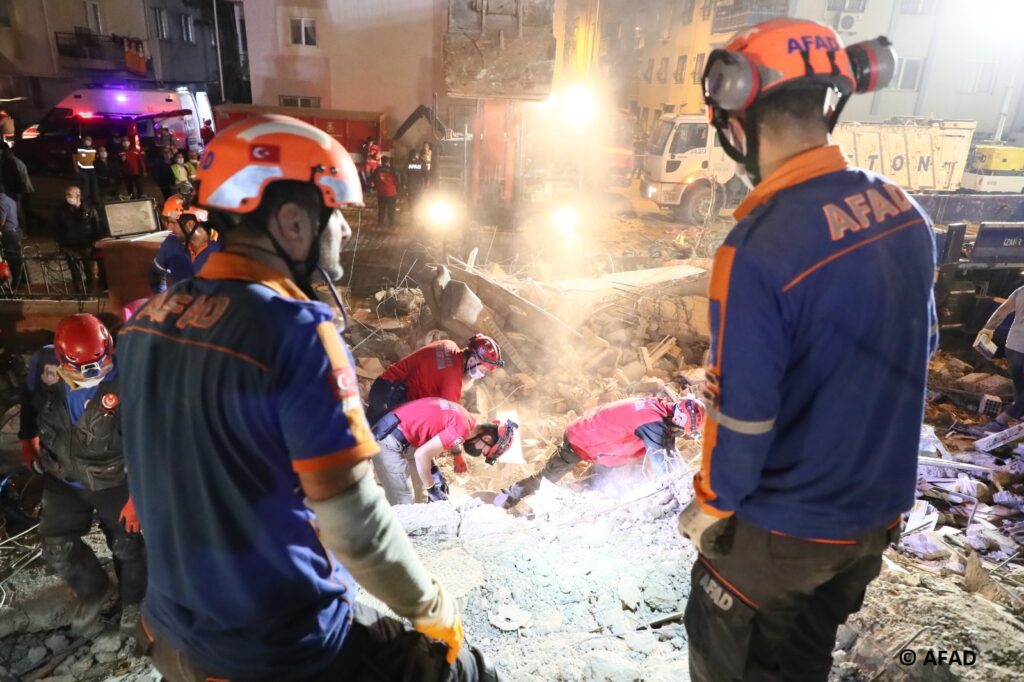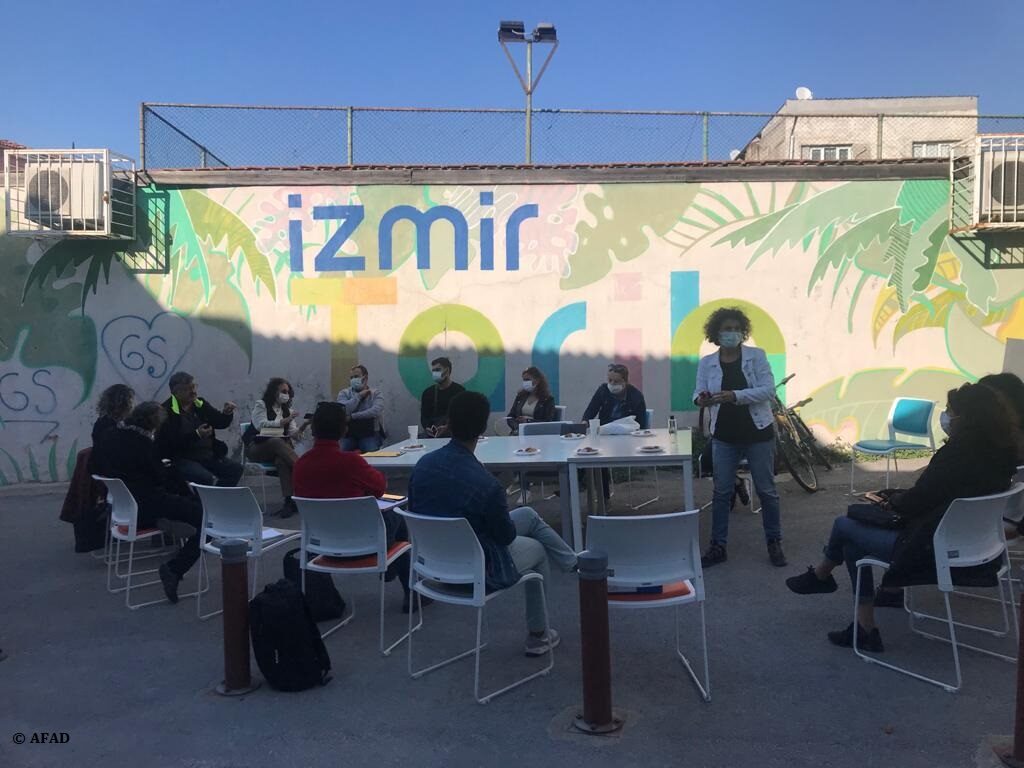By Mehmet Akif Alkan, Geophysical Engineer at the Risk Mitigation Group of AFAD and PROCULTHER Focal Point, Erkan Doğanay, Disaster and Emergency Management Expert at the AFAD National Disaster and Emergency Management Center and Dr. Deniz GÜNDOĞDU (ATASAGUN), Restorer Architect (MSc.) and Disaster Management (PhD) at Turkish Ministry of Culture and Tourism

after Izmir Earthquake
On 30th October 2020, at 14:51 local time, an earthquake of 6.6 magnitude on the Richter Scale hit the Seferihisar coast of the Aegean Sea; in the aftermath, out of the 1148 aftershocks , 43 were above 4 on the Richter Scale. The event was felt across the whole area West of Turkey causing a remarkably high death toll; 117 people died and 1032 people were injured, besides the many collapsed buildings and structures that were severely damaged in Izmir. More than 10.000 civil protection operators and over 1350 vehicles participated in search and rescue operations in the region on the days that followed the event. Humanitarian aid services, damage assessments, debris removal and emergency shelter activities are still ongoing. During the need assessments and emergency management activities carried out, public/private bodies, civil society and volunteer participation including an effective coordination among all the actors involved were ensured. Furthermore it should be mentioned that emergency response and recovery activities were implemented simultaneously, according to the planning scheduled by the Turkey Disaster Response Plan (TAMP).

Immediately after the earthquake, the Izmir Provincial Directorate of Environment and Urbanization, which is the competent institution responsible for building evaluation under the TAMP, officially appointed the Provincial Directorate of Culture and Tourism for the assessment of possible damages to cultural heritage (CH) assets and historical buildings caused by the disaster. In addition, the coordination among the Ministry of Environment and Urbanization, the Ministry of Culture and Tourism (MoCT) and AFAD allowed comprehensive post-earthquake damage assessments. To this purpose, MoCT, AFAD, ICOMOS-ICORP and GEA SAR have jointly set up a voluntary team of experts.

The trained team of experts inspected the affected historical buildings using the assessment templates, prepared by the General Directorate of Cultural Heritage and Museums and the General Directorate of Foundations of MoCT, to evaluate the damage suffered by different types of building. Following a desk study, the team established the affected sites to work on and, after a 5-day visit, identified the damages caused by the earthquake and tsunami as well as those existing prior to the event. The results of the assessment, even if preliminary, represent an attempt to create a sample of the damaged sites able to cover as many building typologies as possible (construction system, material, function, damage type, etc.). After the coordination activities that followed the earthquake, the involved institutions increased their cooperation and reached a consensus for the establishment of a joint permanent task force able to operate before and after the disaster. In this context, mutual exchange of views between the worlds of civil protection and cultural heritage continues.
As lessons learnt from this important intervention implemented through the fruitful cooperation among the Ministry of Environment and Urbanization, the Ministry of Culture and Tourism and AFAD we should mention the importance of :
- including CH assets during the damage assessment,
- starting the building evaluation immediately,
- ensuring inter-institutional cooperation to holistically include the protection of CH in the Disaster Risk Management cycle, as a result of the efforts exerted in the framework of the PROCULTHER Project,
- involving Universities and NGO in the definition of the work to be carried out in the field,
- establishing efficient communication channels (e.g. WhatsApp groups) including field personnel and HQs staff, in order to ensure effective communications and information sharing during the operations.
In conclusion, the team spirit forged during the course of operations, issues such as assessing strengths and weaknesses in preparation for future events, and reaching a mutual consensus on the establishment of a joint permanent task force operating under common operational procedures for the protection of CH after disasters, can certainly be considered satisfactory results results yielded by this cooperation experience.






